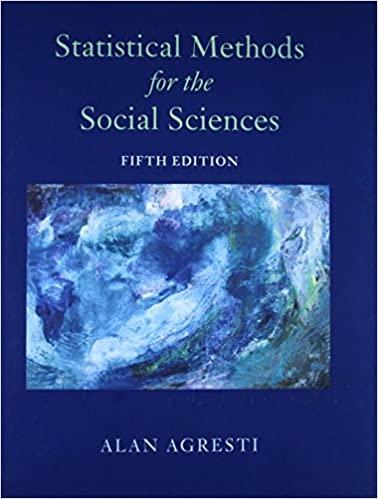An experimental study22 of young childrens moral behavior used as subjects 32 three-year-old girls, half assigned to
Question:
An experimental study22 of young children’s moral behavior used as subjects 32 three-year-old girls, half assigned to each of two conditions. Each girl and two actors created a picture or clay sculpture, after which one actor left the room. In the Harm condition, the remaining actor then destroyed the absent actor’s picture or sculpture. In a Control condition, the actor did not harm it. Upon return of the actor, in the Harm condition 7 of 16 children acted prosocially such as tattling on the actor, whereas in the Control condition none did. The study authors concluded,
“This is the first study to show that children as young as three years of age actively intervene in third-party moral transgressions.” Table 7.27 shows results using software for conducting Fisher’s exact test.
(a) Why is Fisher’s exact test used to compare the groups?
(b) Report and interpret the P-value for the alternative hypothesis that the probability of prosocial behavior is higher for the Harm condition.
Step by Step Answer:






